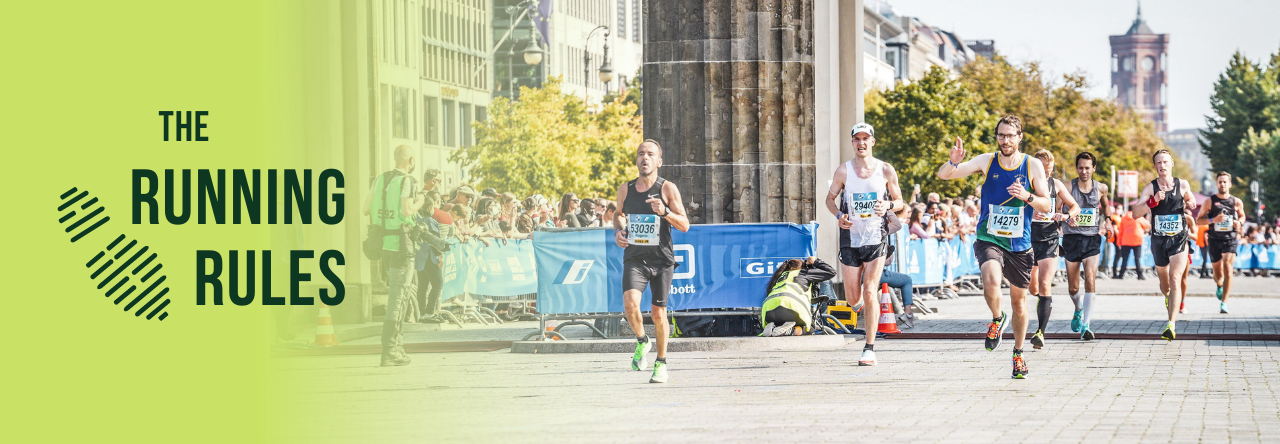Speed = Cadence x Stride Length

There are only two ways to get faster: increase your cadence or increase your stride length. Cadence is how many strides you take per minute. Stride length is the distance travelled per stride. Multiply them together and you will get the distance you cover per minute. Increase either one and the distance covered per minute (i.e. your speed) will increase.
That’s all there is to it. Simples.
Actually it is that simple, but how to do it is not necessarily as easy. The two factors are not independent so increasing one will probably affect the other either positively or negatively. Also, everyone’s build and technique differs, so how do you know which one you should try to increase?
Are you a shuffler or a loper?
At the two ends of the scale are the shuffler and the loper. A shuffler may have a high cadence but a small stride length due to little or no push off from the ground. Imagine sliding your feet out in front of you and doing that as fast as you can. The length of your legs is the limiting factor.
The loper uses a lot of energy to propel themselves in the air and may have a reasonably long stride length but the extra time in the air coupled with overstriding means their potential cadence is greatly reduced.
Overstriding, where the foot lands in front of the body at an angle which is not perpendicular to the ground, applies a braking force to the body (imagine running down a steep hill and actually trying to stop yourself going too fast).
This is a good way to get injured as it increases force through the ankle and knee especially. It also increases the ground contact time which reduces cadence.
The best way to see which you are is to get someone to analyse your technique or video yourself. Check that you are not overstriding by looking at the angle of your foot as it lands. It should be straight and under your body’s centre of mass.
Secondly, look at how far off the ground you push off. If you don’t get far off the ground, you may not be pushing off as much as you could. Of course too much is a waste of energy.
Finally, check your current cadence at a medium/hard effort – something you can hold for an hour. Your training should have a variety of paces included so we want to measure something that is in the middle. When you run faster or slower then cadence or stride length has to change but it’s likely to be a bit of both.
Although there is no hard and fast rule for optimum cadence, most elites are purported to run with a cadence around 180. However, runners have a big variation in cadence depending on many factors so cadences above 200 or lower than 150 are not uncommon.
The point is, the lower your cadence is now, the more room you probably have for increasing it. If you already have a very high cadence, you probably need to look more at improving your stride efficiency to get faster.
I know what I am, but now what should I do?
Knowing which end of the scale you are will help you to know whether you should try to increase cadence or stride length and you may actually have to decrease the other to improve in the long run.
Firstly, if you are overstriding, you should try and correct this. But the easiest way is to try and increase your cadence because, in doing so, it will likely force you to shorten your stride length.
Secondly, if your technique is not obviously at either extreme, try to increase your cadence very gradually but maintain your form. Adding strides to some of your sessions will give you practice at running with a higher cadence.
Increasing cadence is the easier way to get faster but it isn’t the most suitable for everyone. If you know that your cadence is high already and you observe little to no push off the ground, try some running drills like A-skips and bounds to improve your push off. This will help you increase your stride length.
Your cadence may actually drop a little at first as you put more energy into each stride but this will give you more headroom to increase your cadence again later.
If you make any changes to your technique, do it very gradually! Running in an unfamiliar way will put stress on places that aren’t used to it so only do this in small bits.
Keep analysing yourself
Most running watches will provide data for both cadence and stride length. Monitor these on a monthly basis on a similar type run to check for any noticeable changes. Try to video yourself monthly too.
The more you watch yourself, the more you are likely to notice anything out of place. If you’re unsure of what you are looking for then ask a coach or send me an email – I’d be more than happy to help.
Which type of runner are you? What is your cadence? How will you get faster?

Leave a Reply